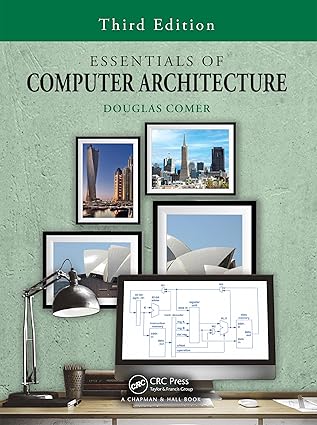Essentials of Computer Architecture: A White Paper
Introduction
Essentials of Computer Architecture by Doug Comer provides a comprehensive introduction to the fundamental concepts and principles underlying computer systems. This white paper aims to expand upon the core topics covered in the book, offering a more in-depth exploration of key areas and incorporating recent advancements.
Expanded Topics
Instruction Set Architectures (ISAs)
- RISC vs. CISC: Delve deeper into the trade-offs between Reduced Instruction Set Computing (RISC) and Complex Instruction Set Computing (CISC) architectures.
- x86 Architecture: Explore the evolution of the x86 architecture, including its transition from CISC to hybrid architectures.
- ARM Architecture: Discuss the popularity and applications of the ARM architecture, particularly in mobile devices and embedded systems.
Processor Design
- Pipeline Stages: Explore the different stages of a typical pipeline, including fetch, decode, execute, memory, and writeback.
- Pipeline Hazards: Discuss various types of pipeline hazards, such as structural, data, and control hazards, and techniques for mitigating them.
- Superscalar and Out-of-Order Execution: Explore advanced processor techniques like superscalar execution and out-of-order execution, which aim to improve performance.
Memory Systems
- Cache Memory: Delve deeper into cache memory design, including cache coherence protocols and cache replacement policies.
- Main Memory: Discuss different types of main memory, such as DRAM and SRAM, and their characteristics.
- Virtual Memory: Explore the concept of virtual memory in more detail, including paging and segmentation.
Input/Output (I/O) Systems
- I/O Devices: Discuss a wider range of I/O devices, including storage devices, network interfaces, and multimedia devices.
- I/O Techniques: Explore different I/O techniques, such as programmed I/O, interrupt-driven I/O, and DMA.
- I/O Controllers: Discuss the role of I/O controllers and their interaction with the CPU and I/O devices.
Multiprocessing and Multithreading
- Symmetric Multiprocessing (SMP): Explore the benefits and challenges of SMP, including shared memory and synchronization mechanisms.
- Multithreading: Discuss different multithreading models, such as user-level threads and kernel-level threads, and their advantages and disadvantages.
- Parallel Processing: Explore parallel programming paradigms and their applications, including data parallelism and task parallelism.
References
- Comer, D. E. (2017). Essentials of Computer Architecture. Prentice Hall.
- Patterson, D. A., & Hennessy, J. L. (2017). Computer Architecture: A Quantitative Approach. Morgan Kaufmann.
- Stallings, W. (2016). Computer Organization and Design: The Hardware/Software Interface. Prentice Hall.
- Intel Architecture Guide: https://www.intel.com/content/www/us/en/developer/articles/technical/intel-sdm.html
- ARM Architecture Reference Manual: https://developer.arm.com/documentation
Conclusion
This white paper has aimed to expand upon the core topics covered in Essentials of Computer Architecture, providing a more comprehensive and in-depth exploration of key areas. By delving deeper into instruction set architectures, processor design, memory systems, I/O systems, and multiprocessing/multithreading, readers can gain a stronger understanding of the fundamental principles underlying computer systems.



